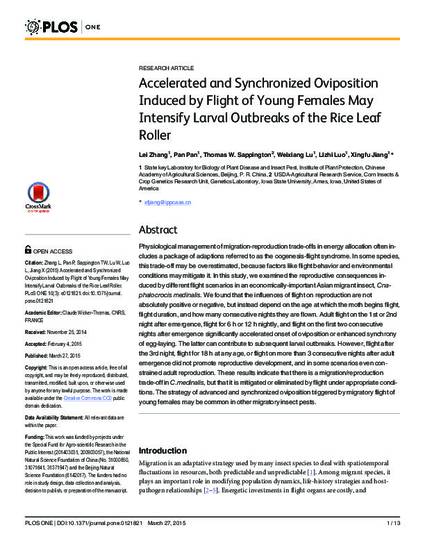
Physiological management of migration-reproduction trade-offs in energy allocation often includes a package of adaptions referred to as the oogenesis-flight syndrome. In some species, this trade-off may be overestimated, because factors like flight behavior and environmental conditions may mitigate it. In this study, we examined the reproductive consequences induced by different flight scenarios in an economically-important Asian migrant insect, Cnaphalocrocis medinalis. We found that the influences of flight on reproduction are not absolutely positive or negative, but instead depend on the age at which the moth begins flight, flight duration, and how many consecutive nights they are flown. Adult flight on the 1st or 2nd night after emergence, flight for 6 h or 12 h nightly, and flight on the first two consecutive nights after emergence significantly accelerated onset of oviposition or enhanced synchrony of egg-laying. The latter can contribute to subsequent larval outbreaks. However, flight after the 3rd night, flight for 18 h at any age, or flight on more than 3 consecutive nights after adult emergence did not promote reproductive development, and in some scenarios even constrained adult reproduction. These results indicate that there is a migration/reproduction trade-off in C.medinalis, but that it is mitigated or eliminated by flight under appropriate conditions. The strategy of advanced and synchronized oviposition triggered by migratory flight of young females may be common in other migratory insect pests.
Available at: http://works.bepress.com/thomas_sappington/107/

This article is published as Zhang L, Pan P, Sappington TW, Lu W, Luo L, Jiang X (2015) Accelerated and Synchronized Oviposition Induced by Flight of Young Females May Intensify Larval Outbreaks of the Rice Leaf Roller. PLoS ONE 10(3): e0121821. doi: 10.1371/journal.pone.0121821.